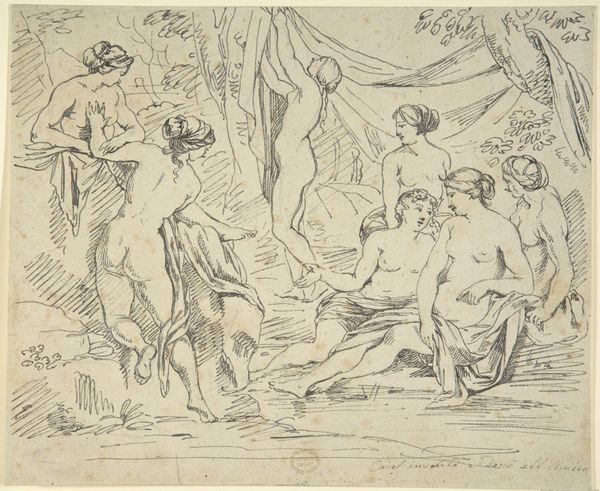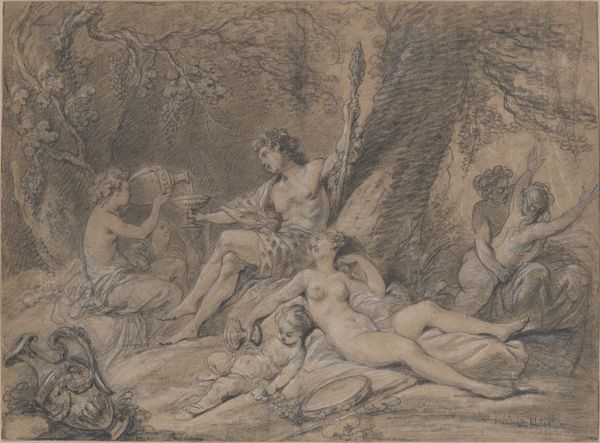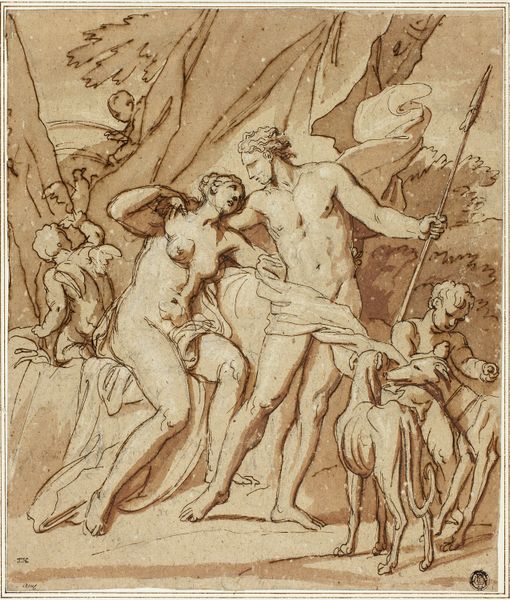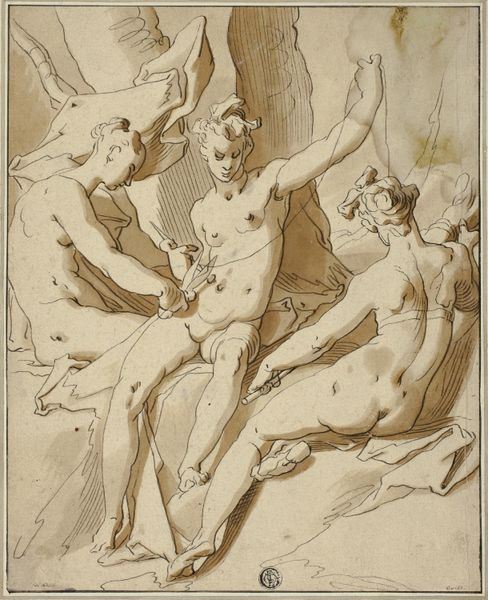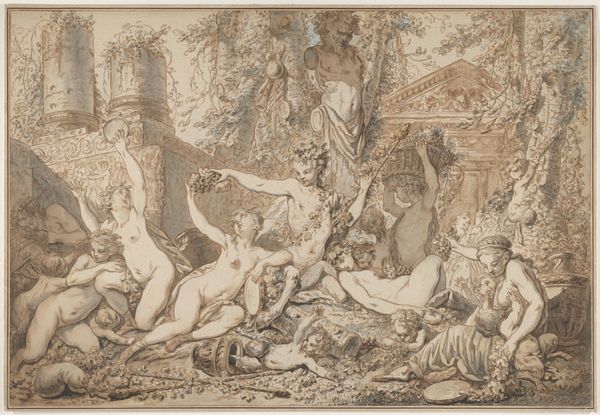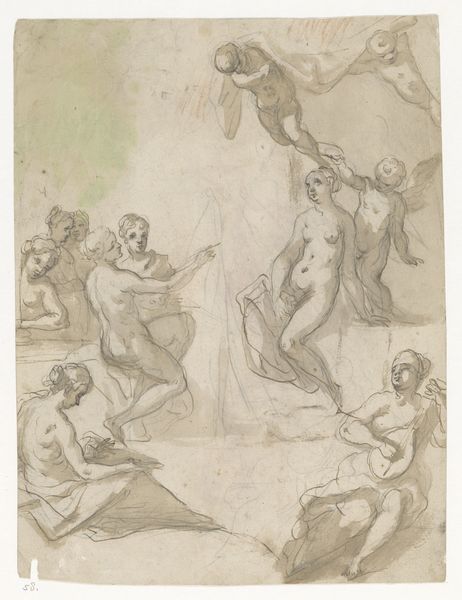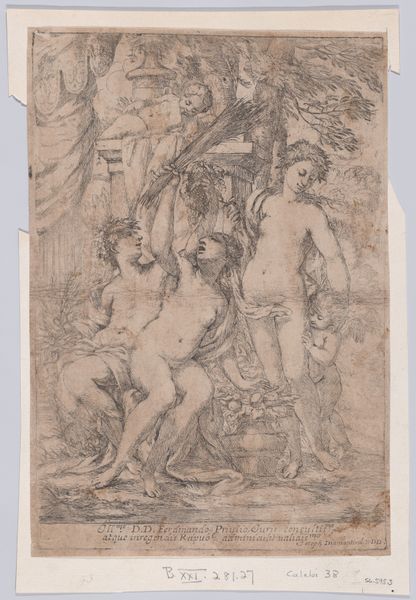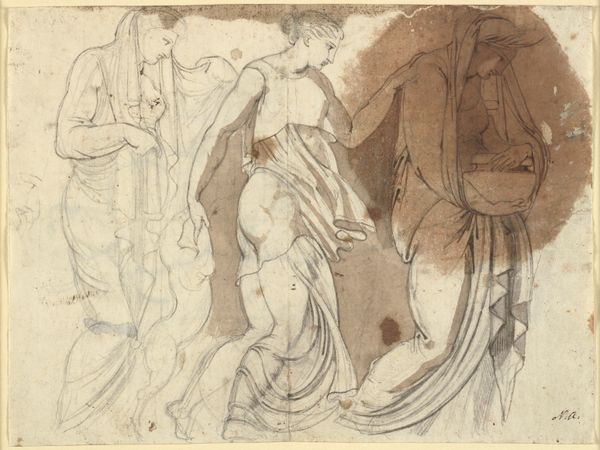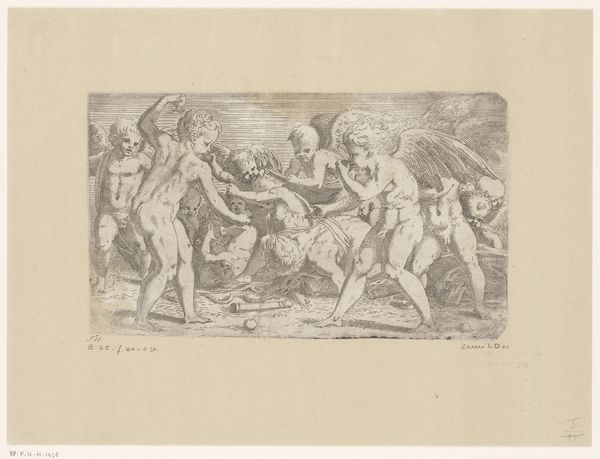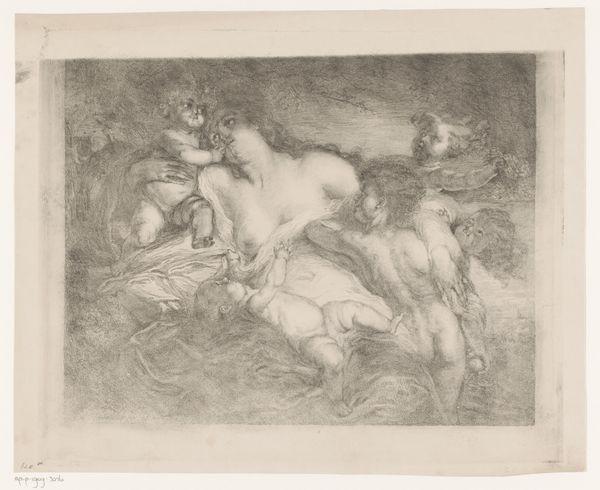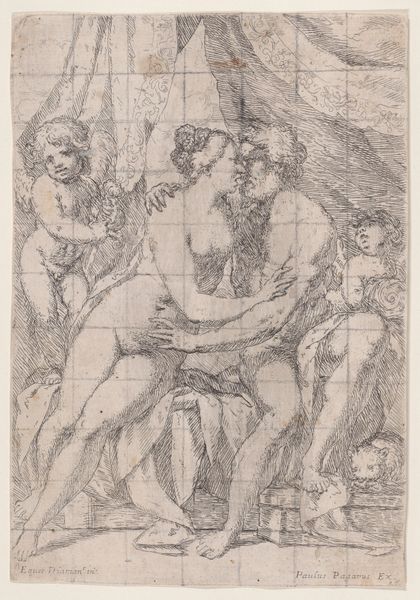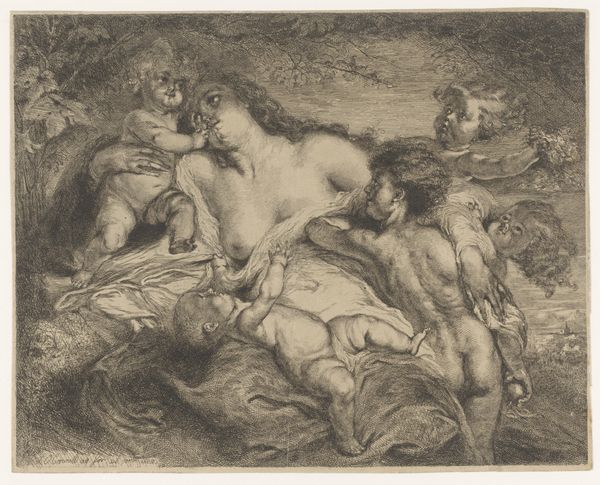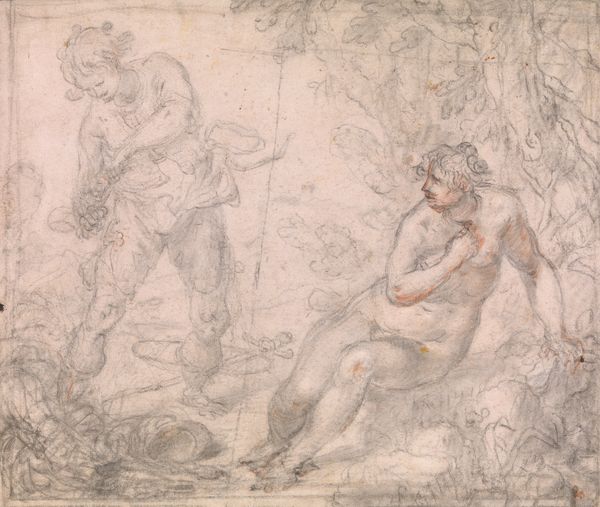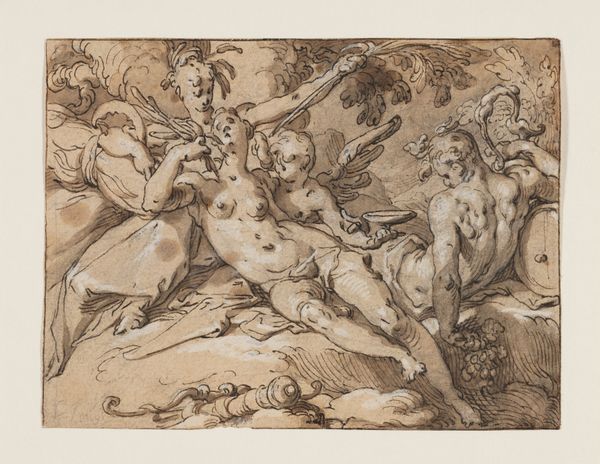
drawing, print, paper
#
drawing
# print
#
classical-realism
#
figuration
#
paper
#
11_renaissance
#
history-painting
#
nude
Dimensions: 297 × 388 mm
Copyright: Public Domain
Editor: Here we have "Diana and Callisto," an undated drawing and print on paper by Adriaen van der Werff. There's a somber mood hanging over the scene. What historical context might shape our understanding of this piece? Curator: This drawing depicts a pivotal moment of discovery and subsequent punishment in the Ovidian tale. Diana, goddess of the hunt and chastity, exposes Callisto's pregnancy, a violation of her vow. To truly grasp this image, we must acknowledge the power dynamics at play. How does Van der Werff visually represent Diana's authority, and what does it tell us about 17th-century societal expectations regarding female virtue and obedience? Editor: It's interesting; Diana's pointing finger does carry a strong accusatory energy. Are the other women in the scene complicit? Curator: Precisely! The nymphs surrounding Callisto seem to both recoil and stare, embodying the social policing of women’s bodies and sexuality. Consider how this scene might resonate with contemporary discussions around victim-blaming and the policing of female reproductive rights. The artistic focus isn’t merely on mythological figures; it invites commentary on how transgression is handled within a community and by figures of authority. Do you feel any sense of vulnerability emanating from Callisto’s posture? Editor: Definitely. She looks ashamed and unsupported. This really adds layers to the image, far beyond a simple mythological narrative. Curator: Indeed. Van der Werff gives us an opportunity to analyze not just the story itself but the continuing echoes of power, gender, and societal control within it. Perhaps considering art history through an intersectional lens gives us not only new appreciation of such works, but gives us vital language to address modern day issues of female control and authority. Editor: This conversation really opened my eyes! Looking at it with a perspective on female roles and societal expectations makes the scene far more poignant and relevant. Curator: Agreed. It shows how art from the past can speak directly to issues of today.
Comments
No comments
Be the first to comment and join the conversation on the ultimate creative platform.
